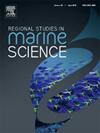公民科学作为监测微塑料的工具:厄尔巴岛的案例研究
IF 2.4
4区 环境科学与生态学
Q3 ECOLOGY
引用次数: 0
摘要
在全球范围内,关于微塑料(MPs)的发生、浓度和分布已经发表了不同的数字。为了更好地预测和理解空气污染问题,需要更多的数据。公民科学(CS)已经成为一种有效的数据收集工具,增加了研究能力,同时也提高了认识,并提供了社会和环境效益。2024年6月,公民科学家在厄尔巴岛参加了由Sail & Explore Association (SEA)组织的为期一周的研讨会。该活动旨在首次绘制出岛上及其周围0.3至5 mm范围内的MPs的发生和分布模式。志愿者和研究人员使用蝠鲼拖网收集地表水样本,并按照标准化的科学协议在六个海滩和十个海面断面收集海滩沉积物样本。该研究产生了1907个MPs颗粒的综合数据集(645个搁浅的MPs和1262个漂浮的MPs)。片段是主要类型,占所有样本的72.9 %。傅里叶变换红外光谱(FTIR)分析了大约10 %的收集数据,显示聚乙烯(PE)是主要的聚合物(海滩样品的55.3% %和海面样品的62.9 %)。收集到的所有塑料的主要颜色是白色(海滩样品311个颗粒,海洋样品650个颗粒)。这项研究为托斯卡纳群岛提供了重要的基线数据,并强调了CS在收集广泛环境数据方面的重要性,为未来研究和政策制定提供了基础,以解决该地区的塑料污染问题。本文章由计算机程序翻译,如有差异,请以英文原文为准。
Citizen science as a tool for monitoring microplastics: The case study of Elba Island
Globally, different numbers have been published on the occurrence, concentration and distribution of microplastics (MPs). To better predict and understand the MP pollution problem, more data is needed. Citizen Science (CS) has emerged as an efficient tool for data collection, increasing research capacity, while also raising awareness, and providing social and environmental benefits. Sampling was carried out by citizen scientists participating in a one-week workshop organized by the Sail & Explore Association (SEA) on Elba Island in June 2024. This event aimed to map, for the first time, the occurrence and distribution patterns of MPs ranging from 0.3 to 5 mm on and around the island. Volunteers and researchers collected surface water samples using a manta trawl, and beach sediment samples following standardized scientific protocols across six beaches and ten sea surface transects. The study yielded a comprehensive dataset of 1907 MP particles (645 beached MPs and 1262 floating MPs). Fragments were the predominant type, representing 72.9 % of all samples. Fourier Transform Infrared Spectroscopy (FTIR) was used to analyze approximately 10 % of the collected data, revealing that polyethylene (PE) was the principal polymer (55.3 % of beach samples and 62.9 % of sea surface samples). The dominant color of all plastic collected was white (311 particles for beach samples and 650 particles for sea samples). This study provides crucial baseline data for the Tuscan Archipelago and highlights the importance of CS in collecting extensive environmental data, providing a foundation for future research and policymaking to address plastic pollution in the region.
求助全文
通过发布文献求助,成功后即可免费获取论文全文。
去求助
来源期刊

Regional Studies in Marine Science
Agricultural and Biological Sciences-Ecology, Evolution, Behavior and Systematics
CiteScore
3.90
自引率
4.80%
发文量
336
审稿时长
69 days
期刊介绍:
REGIONAL STUDIES IN MARINE SCIENCE will publish scientifically sound papers on regional aspects of maritime and marine resources in estuaries, coastal zones, continental shelf, the seas and oceans.
 求助内容:
求助内容: 应助结果提醒方式:
应助结果提醒方式:


